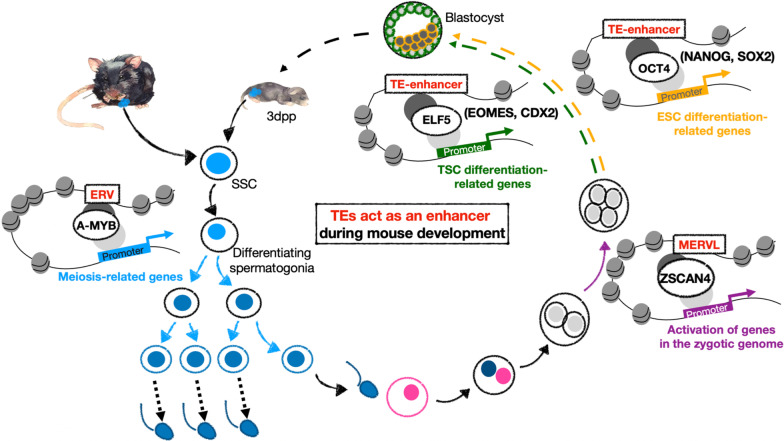Fig. 3.
Some TEs function as enhancers during mouse development. TEs play a role in determining cell fate during different phases of mouse development by regulating transcription through cis activation. In two-cell to four-cell preimplantation embryos, ZSCAN4 binds to MERVLs to initiate zygotic genome activation. When the embryo develops from the four-cell stage into a blastocyst, TE-containing enhancers recruit different transcription factors to differentiate the embryo into ESCs and TSCs. During ESC differentiation, OCT4, NANOG and SOX2 are recruited by TE-containing enhancers. During TSC differentiation, ELF5, EOMES and CDX2 are recruited by other TE-containing enhancers. During the mitosis-to-meiosis transition, spermatogonia differentiate into the stages within PSs and round spermatids, and enhancer-like ERVs recruit A-MYB to facilitate meiosis-related gene expression. TEs, transposable elements; ZSCAN4, zinc finger and SCAN domain containing protein 4C; MERVL, mouse endogenous retrovirus L; ESC, embryonic stem cell; OCT4, octamer-binding transcription factor 4; SOX2, SRY (sex determining region Y)-box 2; TSC, trophoblast stem cell; ELF5, E74-like factor 5 (ETA domain transcription factor); EOMES, eomesodermin; CDX2, caudal-type homeobox transcription factor 2; dpp, days postpartum; SSC, spermatogonial stem cell; A-MYB, A-myoblastosis protein

